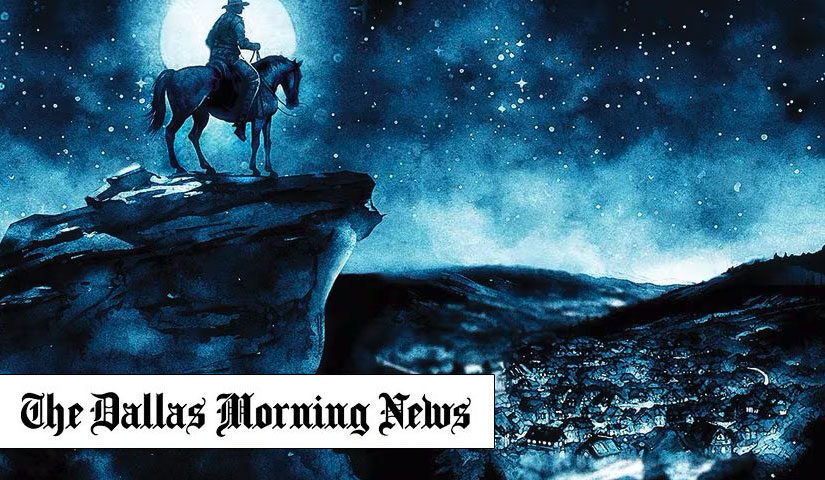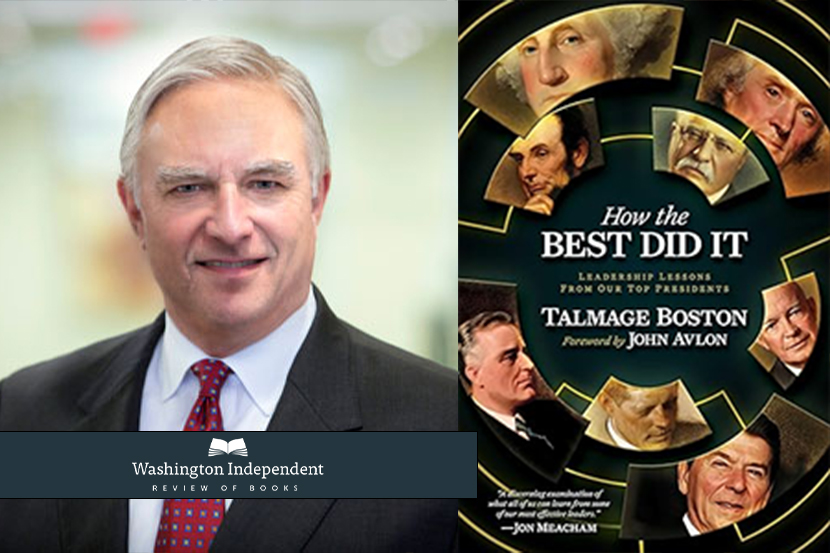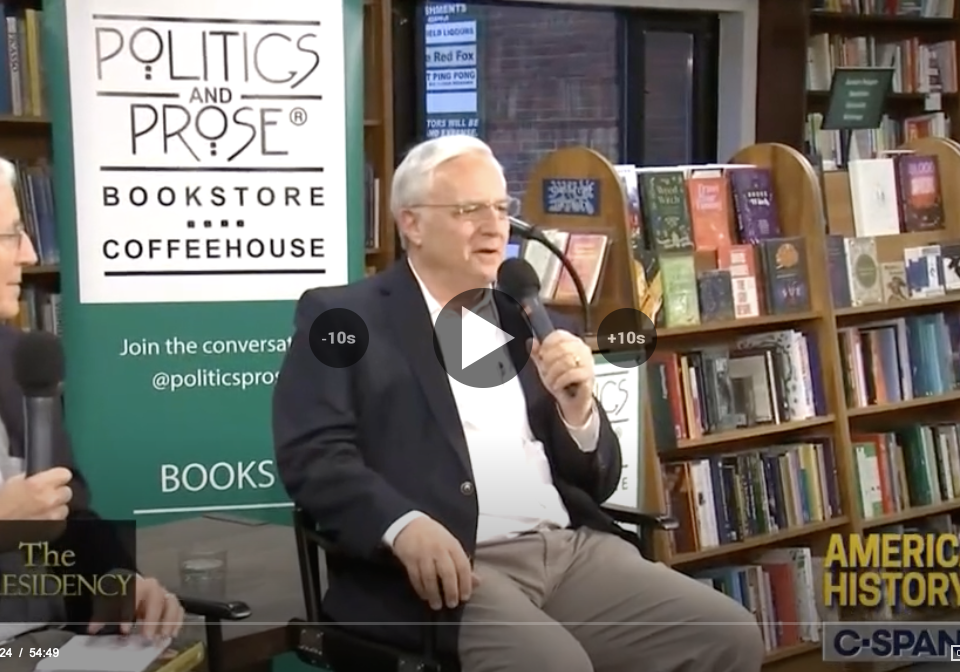Talmage Boston: A Christmas gift with some election year advice
Newspaper reprint of a Western story sent me galloping into the wisdom of Jack Schaefer.
Contributing Columnist Talmage Boston (Michael Hogue)
Two months after Christmas, who remembers which present had the biggest impact? This February, that’s easy for me to answer. The gift appeared on the front page of the Dallas Morning News’ Christmas Eve Opinion section, with the publication of the short story “Stubby Pringle’s Christmas,” by Jack Schaefer. Seeing it had been written by the author of the classic Western novel Shane, I had to read it.
As a seventh grader at Tom Browne Junior High School in Corpus Christi in 1967, I devoured Shane in one sitting, and it changed my life because it introduced me to the world of engrossing fiction. It dug deeper into me than Bonanza, Gunsmoke or any other Western show ever had before.
Soon after I read it, the 1953 movie version of the story came to television, with Alan Ladd as the hero and Jack Palance as the villain. It confirmed the long-term staying power of Schaefer’s spellbinding tale. A mysterious gunslinger rides into an emerging frontier community in hopes of leaving behind his dangerous ways and settling into a calmer lifestyle with the family who boards him in their barn. Soon, his hopes for a peaceful future are dashed when he’s forced to protect the local free-grazing farmers from the belligerent land grabber who wants to run them out of the territory. To achieve his goal, the power monger hires the man he thinks is the fastest gun in the West to get rid of all who stand in his way, and that decision leads to the ultimate showdown between good and evil.
Until reading the Pringle story on Christmas Eve, I’d never read anything else by Schaefer. As with Shane, the tale made a lasting impression. It brought the runaway train of my holiday busyness to a screeching halt, and invited me to focus on what “peace on earth, good will to all” actually means.
I needed to read the story of how the young cowboy Stubby Pringle abandoned his long-savored plan for partying hard at a Christmas dance in order to rescue a poor family when it counted most. The protagonist’s making his generous response to the dismal plight of strangers reminded me of the heavenly affirmation that comes to those who take responsibility for being an earthly “brother’s keeper” toward those unfortunate souls who find themselves down-and-out at Christmas.
Recognizing that both Shane and Pringle were narrative masterpieces, two questions came to mind: Who was Jack Schaefer? And what else did he write? Thank goodness for the internet, which quickly answered both questions.
Schaefer lived from 1907 to 1991. He grew up in Ohio and graduated from Oberlin College, where he edited the school’s literary magazine and studied creative writing and Greek and Latin classics. After quitting grad school at Columbia because the faculty rejected his proposed thesis on the development of motion pictures, he spent more than 20 years as a journalist before leaving the life of the steady paycheck in order to move to New Mexico and become a full-time fiction writer.
Shane came out in 1949 and sold 12 million copies, was translated into 30 languages, and in 1985 was chosen by the Western Writers of America as the best Western novel ever written. Besides Shane, seven of Schaefer’s stories were made into movies.
After reading Shane and Pringle, learning the facts of Schaefer’s life, and reflecting on the pure excellence of his storytelling skill, I wasn’t surprised to see what he had once said about his goals as a writer: “To be literate, direct, and concise; and to express firm convictions based on thorough research and honest reasoning supported by sound arguments.” No wonder I felt such a strong connection to Jack Schaefer. His goals as a writer of fiction matched squarely with my goals as a writer of nonfiction.
What moved Schaefer to the top of the Western literary mountain, though, was not just his stylistic goal, but also his tight grasp on what he did to create a compelling story, using this simple formula: “Establish a distinct and individual major character, pit him against a specific human problem, and show how he rose to meet it.”
With this background research completed, it was now time to read more of Schaefer’s work to see if it measured up to Shane and Pringle. I bought from Amazon his Western short story collection, The Pioneers. Each of its 11 tales proved to be as gripping as Shane and Pringle. What made the collection especially fascinating was the wide variety of “distinct and individual major characters” in them: a lone gold-seeking hunter confronting danger in the wilderness; a barber whose haircuts changed lives; a no-nonsense horse who put people in their place; a non-violent, mentoring sheriff who managed to maintain order in his town; a former rodeo champ turned rancher who struggled with his self-image; a soldier seeking higher rank by a most unusual method; a wounded man who pursues a principled revenge; a wife who changes her feelings toward her deeply flawed spouse; an aging landowner who deals with the heartbreak of having his property condemned; a preacher who aims to stop people from cursing around him; and an immigrant master carpenter who stays productive no matter how many obstacles block his path.
Second, the leader of the free world needs to be guided by an integrity-based moral compass capable of invoking the “better angels” of our nature. Both front-runners score low in this trait.
Per Schaefer’s formula, each of these rich characters confronts “a specific human problem” and “rises to meet it” heroically on his or her own terms. As with Shane and Pringle, they’re all conscience-driven people who address life’s challenges with undaunted courage.
Now to connect these Christmas-inspired dots: We should never underestimate the power of stories to touch our hearts, shape our minds and even, in this election year, win our votes.
America’s presidential candidates would do well to change their stump speeches into storytelling sessions. Each can tell his story about why he is “the distinct and individual major character” who’s ready to “pit himself against the specific human problems” our country now faces, and then explain how he plans “to rise and meet” them in a way that’s “literate, direct, and expresses firm convictions” through “honest reasoning that supports his strong arguments.”
Wouldn’t that be a welcome change?
We welcome your thoughts in a letter to the editor. See the guidelines and submit your letter here. If you have problems with the form, you can submit via email at letters@dallasnews.com





